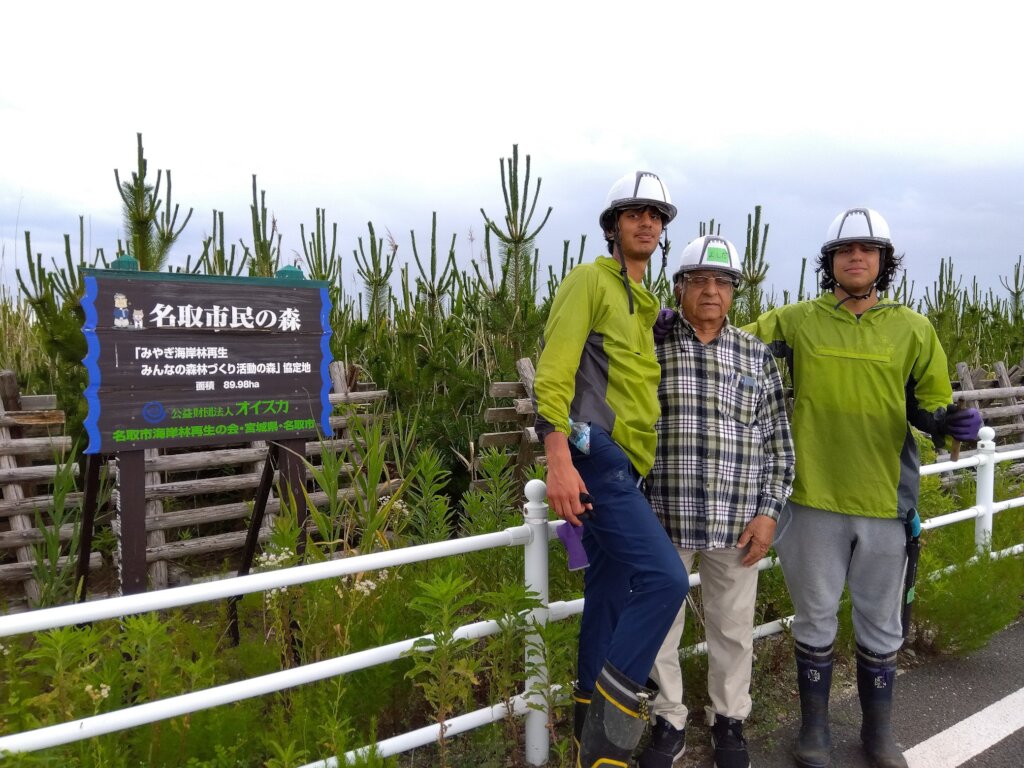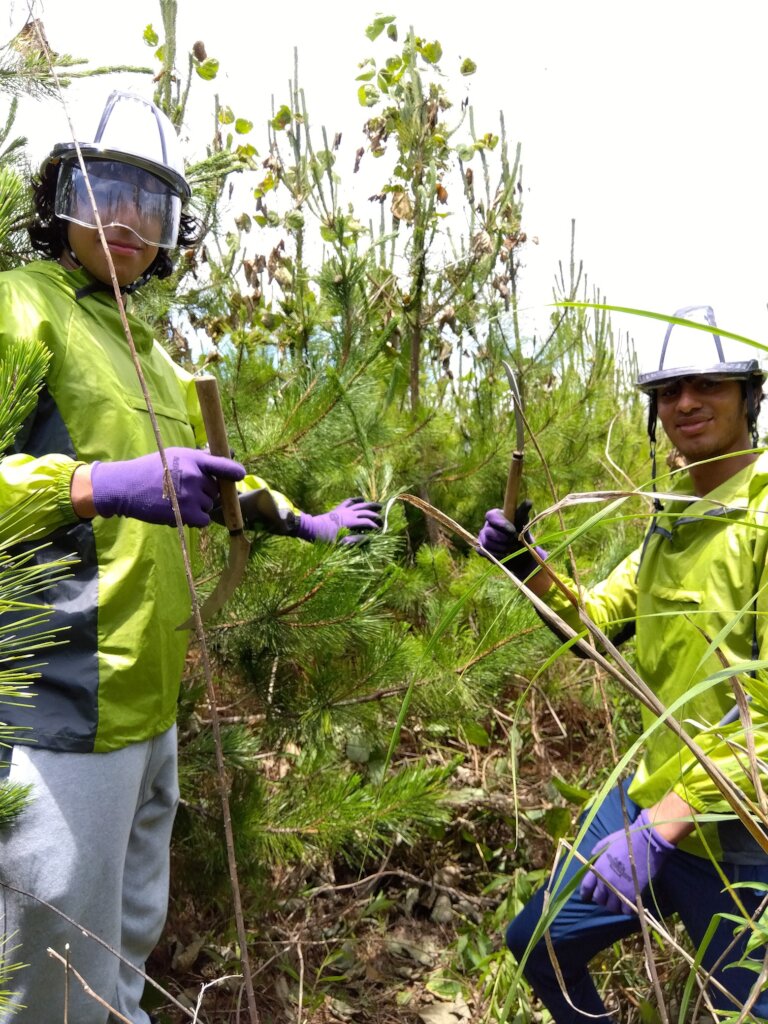By Kumiko Hayashi | Project Coordinator
Before the Corona disaster, about 1,800 volunteers a year came from all over Japan to work from 9:00 in the morning to 5:00 in the afternoon. During the pandemic, there were restrictions on movement in Japan, and we were unable to accept volunteers from outside Miyagi Prefecture, the project site, and we had to limit the number of volunteers for safety purposes.
Now that the condition has gradually stabilized, quite a number of volunteers are returning. Some even come from outside Japan. Our report will focus mainly on the voices of the two group of volunteers from the US (three people) and the Philippines (four people). The former group has members led by the grandfather who has visited our site. He brought with him his two 17-year-old grandchildren to volunteer with him. He told us how Japan was hit by major earthquake, but everyone has worked together to get back on their feet and rebuild. He further expressed how he wanted to show his grandchildren the power of people in restoring the devastated pine forests. That, even though his grandchildren have almost no power, somehow, they could contribute to that existing power.
The two grandsons, who grew up in the city, joined the Japanese volunteers in clearing the removed pine trees from the thinning process. Initially, they had difficulty entering the pine forest because of the sharp edges of the pine needles. However, at some point, they soon became accustomed to the work. One of the grandsons mentioned how he thought that it would be simpler to restore the forest, and that planting only of saplings would be enough. But surprisingly, he realized that it takes time to manage the pine forest. He added that he learned that many volunteers are involved in this project, and that he is glad to work together with other volunteers.
Meanwhile, the other group consisted of a mother and her three sons. Like the other group, the mother had also visited our project site and she wanted to show it to her sons with ages range from 20 to 27 years old. She commented how she was glad that her sons were able to work with the Japanese volunteers. According to her, it was a good opportunity for her children to see up close how thorough the Japanese people work, without cutting corners.
Other than uprooting the invasive kudzu vines, they participated in the thinning process, or the adjustment of the tree density by cutting down a number of trees in a row. The group also joined in the monitoring of the tree height and it is diameter within the project site. To be able to determine the most effective way of growing coastal forest, we have established and constantly monitor the following plots:
a. site with no thinning at all
b. one row thinned and three rows remaining untouched (25% thinned)
c. one row thinned and two rows remaining untouched (33% thinned)
d. one row thinned and one remaining untouched (50% thinned)
The eldest son, who happens to work for the Department of Environment and Natural Resources, expressed interest in our work, including how we carry out activities in cooperation. He was surprised that an NGO is conducting a thorough research and he appreciated our commitment for excellence.
Meanwhile, a sophomore biology student happily commented, "I am used to learning only from a desk, but today was a valuable experience for me to actually experience the work in the field. The Japanese volunteers also worked hard with the Filipino youths, communicated with them in broken English.
The Coastal Forest Restoration Project will continue to work with the help of many people to make coastal forests stronger, while at the same time providing a place where young people can deepen their learning and exchange across borders.
Project reports on GlobalGiving are posted directly to globalgiving.org by Project Leaders as they are completed, generally every 3-4 months. To protect the integrity of these documents, GlobalGiving does not alter them; therefore you may find some language or formatting issues.
If you donate to this project or have donated to this project, you can recieve an email when this project posts a report. You can also subscribe for reports without donating.
Support this important cause by creating a personalized fundraising page.
Start a Fundraiser
